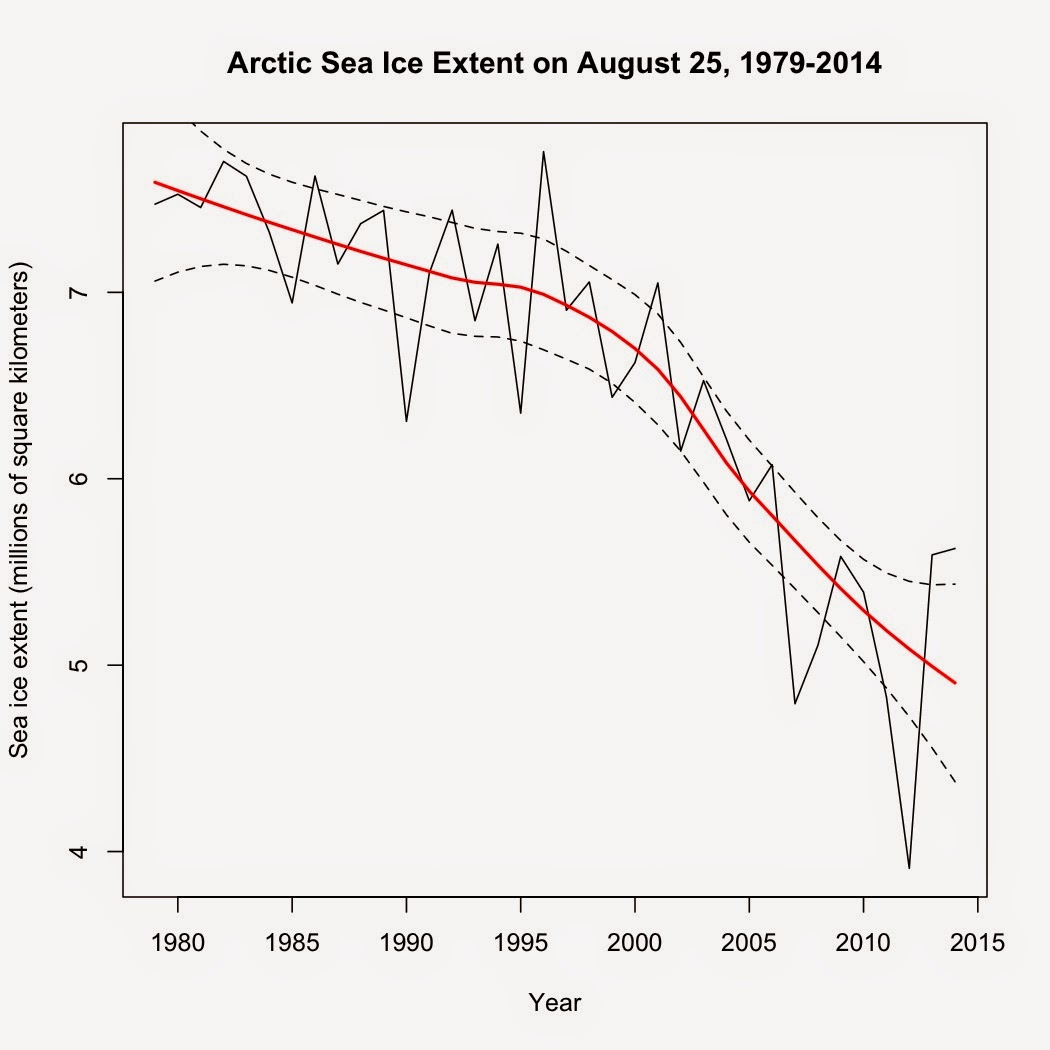The Daily Fail: David Rose's newest cherry-pick.

David Rose, who is no stranger to cherry-picking climate data and then weaving artful tales based on those cherry-picks, is back with yet another example of his perversity . This time, he's trumpeting a 2-year increase in Arctic sea ice as measured on a single day: August 25, 2012 vs. August 25, 2014, claiming a 43% increase based on those two very specific days. This is misleading for multiple reasons, one of which he himself admits in small type under that large flashy graphic at the top of his article: " These reveal that – while the long-term trend still shows a decline – last Monday, August 25, the area of the Arctic Ocean with at least 15 per cent ice cover was 5.62 million square kilometres." (emphasis added). So, just what does that long-term trend show? This:


